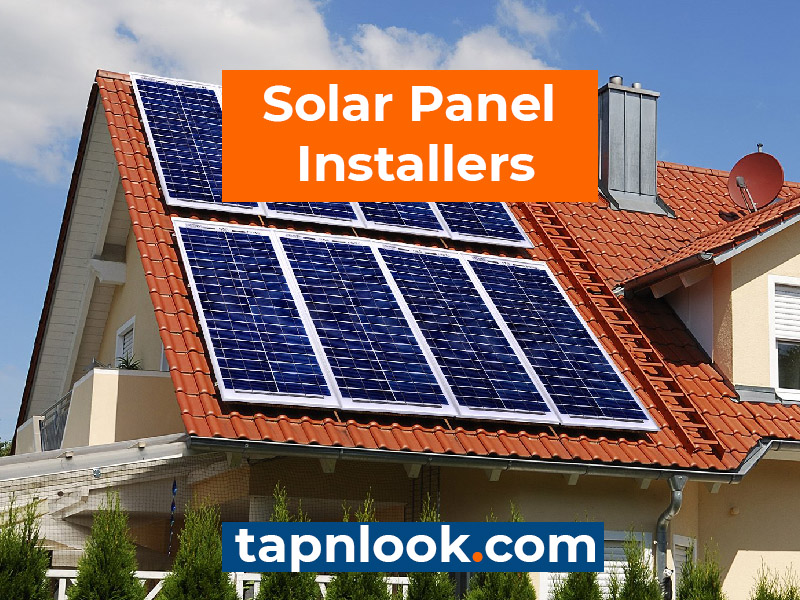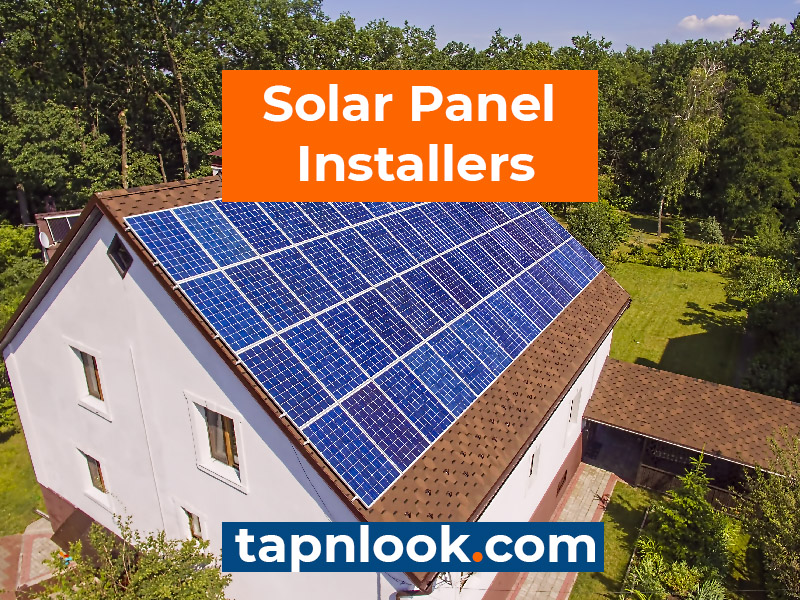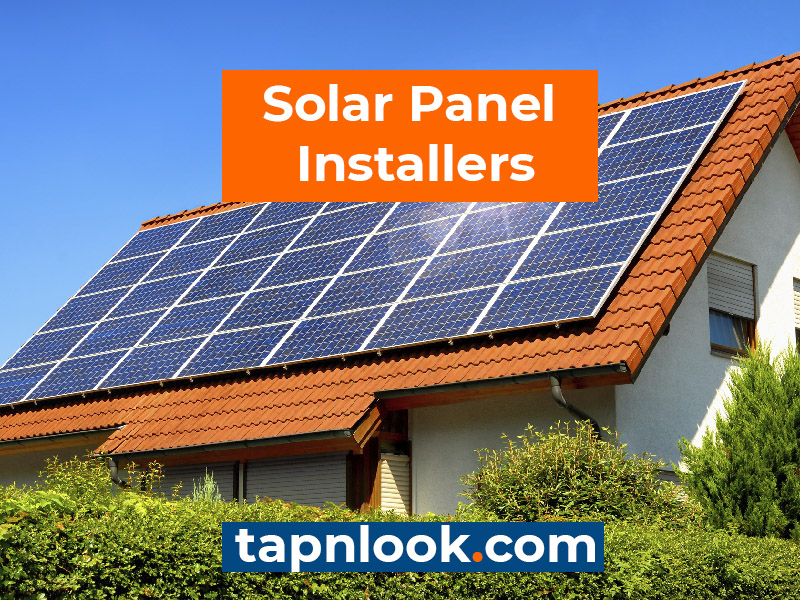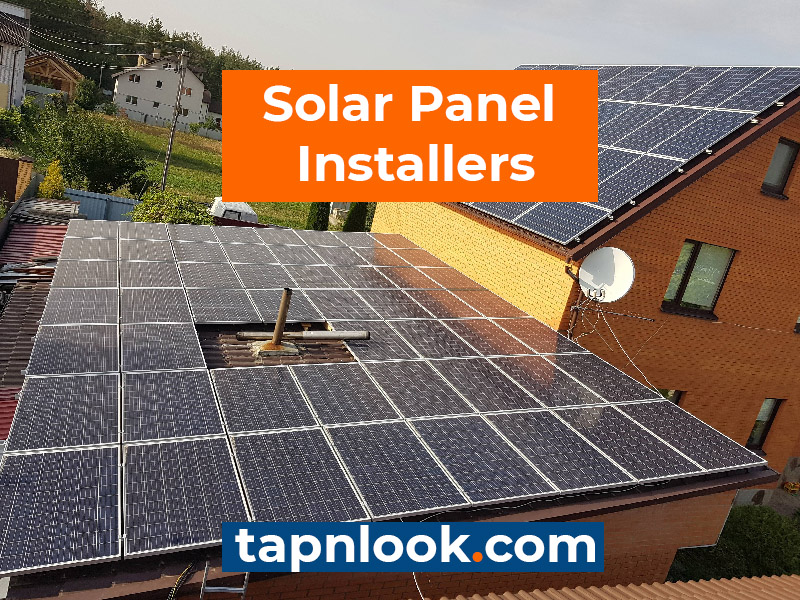Solar Panel Installers in Milton, FL
Solar Panel Installers in Milton, FL near me! 

Price for installing solar panels in Milton, FL:
Solar panel costs typically range from $17,430 to $23,870, but many homeowners will pay around $20,650 on average. Solar panels are a considerable investment. Various factors influence your project price, including the panels you choose, your home’s energy needs, and applicable state and federal tax incentives.
*Connect with our experts to find out the exact cost of solar panel installation in Milton, FL
Installation of solar panels is a common service, the popularity of which grows literally every year. It is not surprising, because such an alternative energy source is an excellent option for creating an independent power supply system. In this case, it can serve as a flat or private house, and buildings of any other purpose, including – industrial. Well, since solar panels are used to generate electricity, they can significantly reduce the cost of it and other traditional energy carriers. That also makes it possible to use them as additions to the classical systems of heating and hot water supply. Thus, from solar energy you can get a lot of benefits, but for this you must first competently perform the installation of solar panels, which is discussed in detail below.

Solar panel design
Starting to study the relevance of solar heating of a private house, it is not unreasonable to first understand – from what components such a system consists. The traditional solar panel itself is a set of conventional batteries on photovoltaic cells that can convert solar energy into electrical energy. For this reason, solar panels are often referred to as solar panels or heliobatteries. At the same time, the strength of the current produced by such a device is always directly dependent on the intensity of light radiation. The brighter it is – the more current generation. Thus, to install solar panels means to get a kind of mini-electric station for supplying electricity to a private house, non-residential building or even a flat.
Well, the main structural elements of such an alternative energy source are:
- Solar panel – in the singular, but more often plural, used as a converter of sunlight into electricity;
- Battery – a chemical current source that stores the electricity generated by the batteries for later use;
- Charge controller – which constantly monitors the voltage in a line of batteries for safe and prolonged use;
- Inverter – converting the constant electrical voltage of the battery pack into the 230V AC voltage required for domestic use;
- Fuses – mounted between all elements of the solar energy system and protecting it from extremely dangerous short circuits;
- A set of connectors of MS4 standard.
It is also useful to know that solar panel controllers, in addition to their main function of monitoring the battery voltage, are able to switch off certain elements of the system if necessary.
For example, if the battery terminals reach the maximum value of 14 V during the day, indicating full charging, the photovoltaic converter interrupts the process. In turn, at night, when the battery voltage reaches an extremely low value of 11 V, the controller stops the system.
This is not a complicated design of a standard solar mini-electric power plant, in the construction of which is also nothing too problematic. But, in order for this process to not cause difficulties, it is necessary to choose the right place for the placement of such an installation beforehand.
Where is the best place to install solar panels?
The installation of solar panels in a private house or even an apartment building is possible in different, but necessarily well-lit points, namely on the roof, on the balcony, or in the neighbouring area. The main thing in this matter is to ensure all the necessary conditions for maximum energy production.
One of them is the correct orientation with the optimal angle of inclination of the panels relative to the horizon. With this everything is quite simple. It is natural that all light-absorbing surfaces should be directed towards the south, and the sun’s rays should ideally fall on them at an angle of 90°. As for the second factor, in order to achieve it, it is necessary to select the optimal angle of inclination of the battery depending on the climatic conditions of a particular region. At the same time, you should know that it is desirable to change the inclination of photovoltaic modules during the year.
To ensure maximum performance, solar panels, the installation of which is allowed on stationary structures made of metal profiles, or on their modernised rotating analogues, should be turned to the desired angle 2 – 4 times a year. Experts recommend doing this on 5 March, 18 April, 24 August and 7 October.
Obviously, it is most convenient to manually perform such turns when the solar panels stand on the adjacent territory. In such cases, it is desirable to raise them above the soil surface by about 4.921 hd, so that air can circulate freely under the panels and their lower parts are not covered with snow during winter.
 Interestingly, there are only two ways to fix these products by:
Interestingly, there are only two ways to fix these products by:
- Pressure clips;
- Bolt connections via through holes in the bottom of the frames.
But, regardless of the method of installation, no additional holes should be drilled in the panel structures, nor should any other changes be made to them independently. It should also be known that even a small shadow reduces the generation of electricity by such a device. Therefore, the installation of each solar panel is possible only in places that are not subject to any shading. Moreover, the supporting structures for them should be made of corrosion-resistant materials.
Choosing a suitable place for placing sets of photocells, it should be remembered that in the future they will have to keep them clean. After all, the accumulation of dust, ice or snow on light-absorbing surfaces reduces the amount of electricity produced by at least 10%. The main thing is not to use glass to protect the panels, as it reduces their efficiency by at least 30%.
 Types of solar panel interconnection
Types of solar panel interconnection
Since in the vast majority of cases solar-powered mini power plants consist of several, and sometimes numerous, individual panels, they need to be properly connected into a single system.
 The following three installation schemes can be used for this purpose:
The following three installation schemes can be used for this purpose:
- Parallel connection of solar panels – provides for the connection of terminals of the same name to each other, in which the elements have two common nodes of conductor convergence and branching. Simply put, in such a scheme “pluses” are connected to “pluses” and “minuses” to “minuses”, the result of which is an increase in the strength of the output current, while the output voltage remains within 12 V. In general, the value of the maximum output current at the parallel connection scheme of solar panels is directly proportional to their number. At the same time, the use of this type of connection to solar panels of different capacities leads to a reduction in their performance, approximately 5%. Therefore, it is recommended to connect products with different characteristics in series;
- Series connection of solar panels – involves connecting opposite poles to each other. That is, the “plus” of the first panel is connected to the “minus” of the second panel, and the remaining unused “plus” of the second panel and “minus” of the first panel is connected to the controller located further down the scheme. In this case, the conditions for the flow of current are created, in which there is only one way to transfer the energy carrier from the source to the consumer. Also, with a series connection of solar panels voltage at the output increases, reaching 24 V, which is enough to power LED lamps, some types of portable equipment and even part of the electric receivers. This makes this scheme somewhat more practical compared to the parallel one;
- Mixed solar panel connection – also called series-parallel connection – is most often used when several battery groups need to be connected together. In this case, the output voltage reaches values that are most suitable for most household tasks. This scheme is also advantageous because in case of failure of one of its elements, the others continue to work, which significantly increases the reliability of the system as a whole. Each of its cells, regardless of type and size, can generate a voltage of 0.7 V. The principle of mixed connection of solar panels is based on the fact that the devices within each battery group are connected in parallel, and the connection of groups in one circuit is performed in series.
- The choice of the optimal type of connection when installing solar panels on the house is made taking into account the capacity of such a power plant and the required DC voltage. The main thing to remember is that the number of connected cells in its composition should be such that the operating voltage supplied to the batteries, taking into account its drop in the charging circuit, exceeds the voltage of the batteries themselves, and the load current of the battery can provide the required value of the charging current. Direct connection of solar panels is carried out by means of inbuilt connection wires with a cross-section of 4 mm2. The end of each such wire is united with a connector of MS4 standard by means of soldering or crimping, which allows to provide maximum tightness of connections. This is very important as solar batteries are always outdoors.
-
-
 Wiring sequence for solar panels
Wiring sequence for solar panels
- For the installation of solar panels on the roof as well as on the ground, single-core copper cables with UV-resistant insulation braiding are most suitable. If, however, wires with UV-resistant insulation are used for installation, they should be laid in corrugated sleeves. In this case, regardless of the chosen connection scheme, before directly connecting the batteries, it is necessary to check the correctness of the electrical installation, making sure that there are no exceedances of technical requirements for the permissible current and maximum voltage of other devices.
- It is also important to strictly adhere to the manufacturer’s requirements for the inverter and charge controller. In order to avoid breakage of the latter, when connecting solar system components, it is necessary to follow the following sequence of actions: After completing the preliminary installation of solar panels for the house, or rather – their connection, it is necessary to check the polarity and measure the idle voltage.
- If this indicator will differ from the value specified in the accompanying data sheet – the connection is made incorrectly and needs to be corrected. And if everything turned out to be correct, at the final stage of installation of the solar station remains to be grounded. To minimise the likelihood of a short circuit, fuses are placed at the connection points of batteries, inverters and controllers. It is also worth noting that when connecting the solar panel to the system does not need to open the junction box, as all the connectors are located in accessible places – which is very convenient. But this is not always the end of the installation process for the entire solar power system.
- The battery or batteries are connected to the controller using the appropriate connectors and respecting the polarity;
- The solar panel or group of batteries is connected to the controller via other connectors and observing the same polarity;
- A load with a small electrical voltage of 12 V is connected to the next sockets of the controller;
- If it is necessary to convert the voltage from 12 V to 230 V, an inverter is included in the circuit, connecting it only to the battery, but in no case directly to the controller;
- To the free output of the inverter connect electrical appliances designed for the standard household voltage of 230V.
-
 Connecting multi-directional solar panels
Connecting multi-directional solar panels
When using the common series wiring scheme, it is important to place all the batteries connected in a single circuit at the same angle and on the same plane – so as not to reduce the efficiency of their use. The fact is that if they are placed in different planes, it will cause the better lit panels to perform better than those that are not fully lit.
Thus, the best performing products will generate electricity, some of which will then be used to heat the poorly lit units. The reason for this is simple – current always flows along the path of least resistance. Therefore, to minimise such losses, in conjunction with all solar panels, the installation of which is performed really competently, it is recommended to use separate controllers for each of them.
However, the main requirements for using the controller must be observed, namely, the power of the connected panels must exceed 1 kW and they must be relatively far away from each other. The solution to the issue of energy losses can be the use of cut-off diodes, which are placed inside – between the plates. That allows them not to overheat, even giving out maximum power. Of no small importance is the voltage drop in the connections, as well as the wires themselves low-voltage part of the solar system. An example of this can be the fact that on a piece of cable length of 1 m and cross-section of 4 mm2, when passing a current of 80 A and a voltage of 12 V, its power drops by 3.19%, which is 30.6 W. And when twists are involved, the voltage drop is usually between 0.1 V and 0.3 V.
 Combining a solar system and the centralised power grid
Combining a solar system and the centralised power grid
If the electricity generated by the sun’s vast resources is to be used in parallel with the standard fixed network, the connection scheme for the solar system must be different. The reason for this is that a private consumer has no possibility of “surrendering” excess energy, which can provoke voltage fluctuations of up to 1 s duration. And this will have an extremely negative impact on the operation and durability of all household appliances. Accordingly, in this case, a scheme is used in which the voltage from the solar array is first directed to the batteries, and from there it is transmitted to the load. When designing such a system, the classical rule applies – the more sources are connected, the more complex the circuit itself becomes.
When designing a variant with the combination of two power grids, it is desirable to take into account two types of load:
- Not redundant – for lighting of the house, operation of household appliances, and not only;
- Reserved – for the operation of emergency lighting, refrigerator or electric boiler.
It is quite obvious that the greater the capacity of the available batteries, the longer the redundant electrical appliances will be able to operate in autonomous mode – in case of emergency shutdown of the main power supply. However, it should be emphasised that when choosing this method of generation, it is necessary to obtain permits from local electricity suppliers. After all, in cases when the electricity generated by the solar power plant exceeds the needs of the household, the meter installed in the household will start to rotate in the opposite direction. Therefore, in order to avoid problems with the above-mentioned documents, it is much easier to channel the excess energy from the installed solar panels to high-capacity batteries, the number of which can be easily increased even over time – taking into account individual needs.
Solar panel installation in Milton, FL
To order installation of solar panels in Milton, FL, at any time and even on a turnkey basis, is easy and simple. Works with thermal power equipment – our profile, so we are pleased to offer customers very favourable rates and efficiency of their performance. For our specialists it will not be difficult to perform the calculation of solar system for heating a private house or installation of solar panels in the flat – right on the balcony. The great experience of our masters combined with a wide variety of modifications of such products allow to realise any projects in this sphere. Installation of solar panels, the price of which depends on their number, the specifics of placement and the overall complexity of such a system – is the way to obtain environmentally friendly, and most importantly, free energy, the source of which
Reasons why you should choose our solar panel installation company in Milton, FL:
 Expertise & Experience
Expertise & Experience
With over a decade of experience in the industry and our technology, our team is capable of handling even the most complex solar panel maintenance tasks.
 Affordable Pricing
Affordable Pricing
Delivering superior service shouldn’t break the bank. We guarantee unmatched quality at affordable rates.
 Safety First
Safety First
We ensure the safety of both your property and our staff by utilizing cutting-edge tools and adhering to meticulous safety standards.
 Exceptional Customer Service
Exceptional Customer Service
From the initial call to any post-service inquiries, we prioritize your complete satisfaction at every stage.
 Local Business Advantage
Local Business Advantage
As an integral part of our community, we understand its unique needs and tailor our services accordingly.
 Fast & Efficient
Fast & Efficient
You can continue to go about your daily business without being on the premises while our team provides the fast and efficient service that has made us the number one choice in Milton, FL. All you have to do is come home and see that your solar panels are already installed!

Does the solar panel installation company offer rebates?
Absolutely!!! Our solar panel installation company values our community, which is why we offer discounts to veterans and retirees in appreciation for their service and support. In addition, our loyalty programme is designed to show our appreciation and reward loyal customers who consistently choose our services.
Customer testimonials about our solar panel installation services in Milton, FL:





I am very happy with the service I receive from this company, they are responsible colleagues with an excellent and very professional working team.
As a satisfied customer, I recommend them.





Arguably the best solar panel installer in and around the world. As one of the companies vetted and approved by the city, we contracted them to install 18 panels in 2018 and had a great experience. They took care of all the paperwork, permits and inspections and completed the installation in two and a half days.





Our experience with this company has been exceptional in every way. They accurately represent their product, deliver, install and follow up with us in the most professional manner. Every member of the team that worked on our panels was a delight. Friendly, well spoken and efficient. I highly recommend this company to anyone thinking about solar energy.





Knowledgeable, professional, no pressure. They do all the hard work for you, such as getting permits and installing panels. Great prices and credit options while being a certified company and benefiting the community. Would recommend them again and again.





Fast, professional, friendly, easy to work with. Installed 16 solar panels in 2018 as part of the green energy incentive programme. Highly recommend this company!




This company is awesome . The staff is responsive and very knowledgeable about every aspect of solar energy and solar installation. They are a pleasure to work with.
We are always happy to hear from you and help you with solar panel installation in Milton, FL:
Our contacts:
Looking for best solar panel installer. Providing top-quality solar panel installation services at very low cost.

